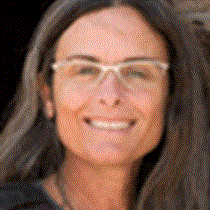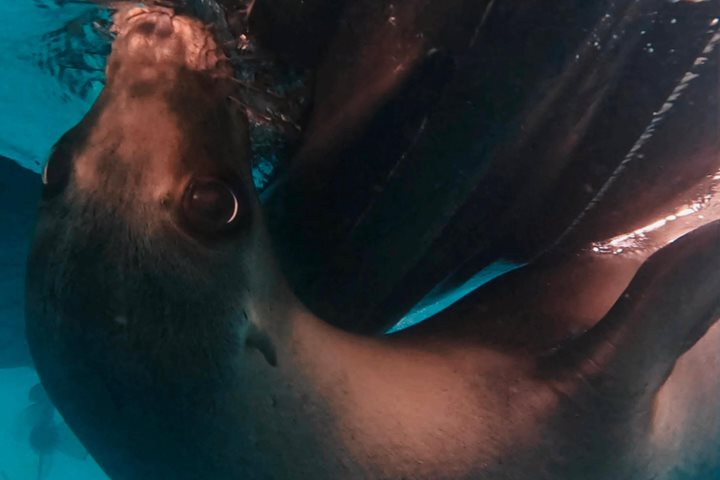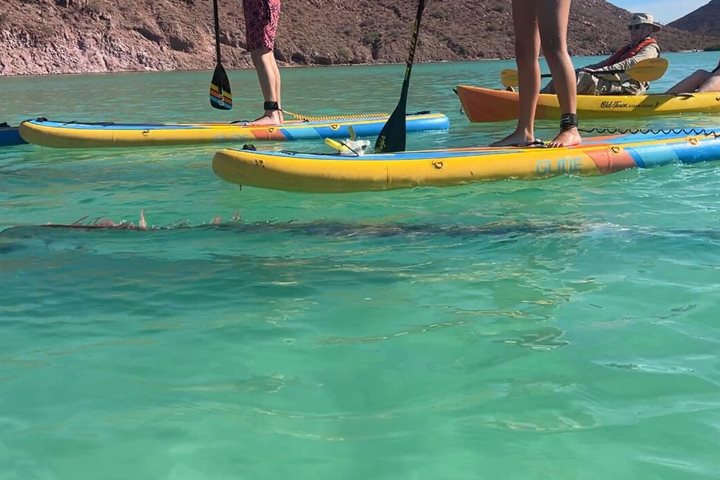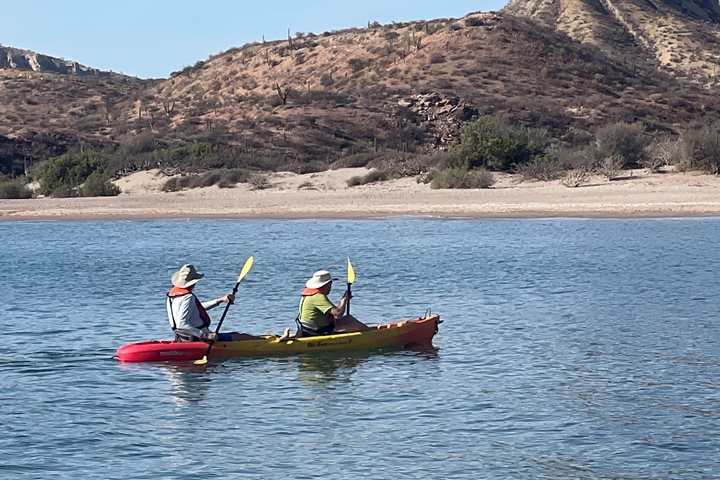What an interesting first sight this morning off of the National Geographic Sea Lion. Were we still dreaming or was that a thick fog and a light mist here in Baja, Mexico? We were anchored off the eastern side of Isla San Esteban, a nesting place for the endemic yellow-footed gulls. After breakfast we reached the rocky beach via our expedition landing crafts and carefully made our way up over the slippery rocks. As we stared our walk up the arroyo we saw several of these large beautiful gulls sitting on their nests and we were mindful to not disturb them as we passed.
On our hike we saw many Pinto Chuckwalla skeletons and some of us even saw some live ones! One of our younger guests nearly stepped on the rarely spotted endemic San Esteban black tailed rattlesnake. Excitedly we took out our cameras and a few fortunate people were able to snap some photos before the snake hurriedly slithered under the dry shrubbery.
We welcomed the cool, misty weather as we contemplated the beauty of the various colors of the canyon walls. Usually the bright sunshine we encounter on Isla San Esteban not only makes photography challenging but also hiking through the flash flood paths, hot and tiring.
The flora on this large desert island includes the towering cardon, the galloping cactus, and the endemic hedgehog. On a few of the cardon cacti we had the delightful opportunity of photographing the large creamy white flowers that start blooming in April. As the sun burned off the retreating fog on the way back to the landing site, we saw several spiny-tailed iguanas.
After a delicious tamale and salad lunch we took our inflatable landing crafts to the small nesting sanctuary of Isla Rasa. This island is the breeding ground of 95 percent of the world’s population of the Heermann’s gull and the elegant tern. A small group embarked on shore to take a hike. Unfortunately the nesting birds are late this year or man not breed at all if they sense a lack of food for them and their chicks. This island is also home to an abundance of harmless small flies known as bobitos.
A larger group of guests boarded the expedition landing crafts to explore the islands from a boat. Many California sea lions greeted them and continued to put on a playful show, gracefully diving in and jumping out of the water. We watched as Heermann’s gulls chased the fishermen in their boats.
At evening re-cap Adrian Cerda, from the Chuckwalla project gave us an interesting talk on his research and also on the work of Eqriqueta Velarde who has been doing research on the sea birds on Isla Rasa for 36 years.








